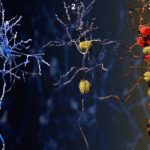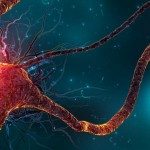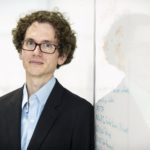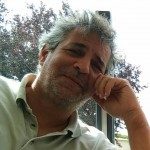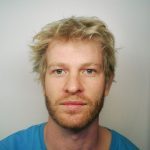Introduction
Consciousness is characterised by the ability to awake and interact with our environment. This state of wakefulness promotes sensory perceptions, whether from outside (the environment) or inside (for example, memory). These perceptions are then processed and made conscious through the action of specialised neural networks called correlates of consciousness (NCCs; Mashour et al., Neuron 2020). Studying NCCs has led to multiple theories explaining their functioning, including the global neuronal workspace theory, developed by the Dehaene and Changeux group (2004) and inspired by Baars (1988), and the integrated information theory, proposed by Tononi (Boly et al., J. Neurosci. 2017), and inspired by Edelman (1989). These theories emphasise the crucial role of the prefrontal-parietal network, particularly the anterior cingulate cortex and the dorsal prefrontal cortex. They also highlight the necessity of functional integrity in the circuits of wakefulness, including the basal ganglia (ventral tegmental area) and brainstem nuclei integrated into the ascending reticular activating system, involving ponto-mesencephalic neurons and the locus coeruleus (Koch et al., Nat Rev Neurosci, 2016).
Acute primary brain injuries, such as intraparenchymal hematomas, subarachnoid haemorrhages, ischemic strokes, and traumatic brain injuries, can seriously threaten the functionality of central neural networks and cause disorders of consciousness (TDC), ranging from transient coma to prolonged states of altered consciousness (non-responsive wakefulness state, minimally conscious state). These disorders reflect the severity of the initial brain impact (Maas et al., Lancet Neurol. 2017). Measuring the extent of neuronal damage and predicting the speed and degree of consciousness recovery represents a double challenge for science and medical practice (Maciel, Contin Lifelong Learn Neurol, 2021).
The severity of brain injuries often necessitates admission to an intensive care unit and in some cases, neurosurgical or neuroradiological intervention. The management of potential complications, such as intracranial hypertension or secondary complications (e.g., hyperthermia, infections, hemodynamic, hydro-electrolytic, and metabolic disturbances), frequently requires deep sedation. This is often necessary, even in patients with pre-existing TDC, to optimise brain metabolism and perfusion (Oddo et al., Crit Care. 2016). Deep sedation for several days or more, in cases of refractory intracranial hypertension, can mask changes in the neurological status of the patient, complicating neurological assessment and prognostication. However, critical decisions regarding the limitation or withdrawal of treatment are often made in this complex context (Lazaridis et al., Neurocrit Care, 2019).
The consequences of these decisions, affecting patients, their families, society, and the healthcare system, are significant, placing the evaluation of the prognosis of severely brain-injured patients at the heart of an important debate for public health involving scientific, medical, and ethical considerations.
Predicting the recovery of consciousness and wakefulness depends on our ability to evaluate consciousness-related neural networks’ anatomical and functional integrity (NCCs). This involves examining the brain’s ability to perceive and integrate, in a conscious manner, stimuli ranging from simple to complex, thus revealing the integrity of the circuits responsible for wakefulness and consciousness. A multimodal approach is ideal, combining clinical assessment, advanced imaging techniques such as positron emission tomography and functional magnetic resonance imaging, and neurophysiological methods including electroencephalography (EEG) and event-related potentials. However, healthcare professionals often face a dilemma between the accuracy of these diagnostic tools and their immediate availability, particularly in critically ill patients in intensive care units.
EEG is particularly appreciated for its non-invasiveness, the possibility of bedside performance, and availability in most intensive care units. Additionally, it offers high temporal and spatial resolution, enabling the precise evaluation of neural changes in the brain in response to external stimulation, or “EEG reactivity” (Admiraal et al., Neurology, 2020). Significant advances have been made in interpreting EEG signals in patients with chronic disorders of consciousness (TDC), starting with the introduction of complex mathematical analysis methods for signal processing (quantitative analysis, such as spectral analysis or connectivity) (Sitt et al., Brain J Neurol, 2014), and the development of more sophisticated sensory stimulation techniques (Arzi et al., Nature, 2020). EEG reactivity to verbal motor commands has been detected in comatose patients, a condition known as cognitive-motor dissociation, and this reactivity has been linked to better long-term cognitive and functional prognosis (Claassen et al., NEJM, 2019). However, the effectiveness of these quantitative analyses and their general applicability are largely dependent on the quality of the EEG recording, which may be compromised in an intensive care setting due to factors such as artefacts, a limited number of electrodes due to intracranial medical devices, or the effect of sedation. It is hypothesised that overcoming these obstacles by removing the abovementioned constraints would lead to more reliable qualitative and quantitative analyses.
Furthermore, regarding stimulation paradigms, the nature of the stimulus plays a crucial role in determining the types and localisation of neural networks activated. The complexity of the stimulus, whether passive or active and the sensory modality used are key factors influencing the specific activation of neural networks. The addition of an emotional component to the stimulus, such as the use of a patient’s name instead of a simple sound, can activate additional neural networks (e.g., temporal and limbic circuits) associated with interoceptive mechanisms, which are unique to each individual (Holeckova et al., Brain Res, 2006).
The hypothesis is that it is possible to find better access to the consciousness of severely brain-damaged patients by using stimuli known for their strong emotional and memory associations: olfactory stimulation. An approach combining generative models and advanced statistical structure is proposed to develop a new method for probing altered states of consciousness through olfactory stimulation.
This project consists of three initiatives
- The generative approach: Develop a generative algorithm of synthetic EEGs and a statistical structure procedure to create a high-resolution EEG (32 to 64 electrodes), free of missing electrodes, artefacts, and the effects of sedatives, using advanced modelling techniques known for their better generalisation capabilities. A detailed statistical structuring of the data will be carried out, as the problem involves multiple null models that need to be considered to ensure the generative model is conditioned to these models. We will train the generative model progressively using EEGs from healthy subjects, sedated subjects without brain injuries, brain-injured subjects without sedation, and finally, EEGs from brain-injured subjects under sedation. We will also use high-resolution databases (32 to 64 electrodes) to learn the generation of high-resolution EEGs from clinical recordings with 12 or less in cases where electrodes are missing.
- The olfactory stimulus: Develop and optimise the olfactory stimulus to understand its effects on patients.
- Predicting the fate of patients: Use the developed generative model and the optimised olfactory stimulus to characterise the evolution of consciousness in brain-injured patients in collaboration with Eleonore Bouchereau, a medical chief resident, and her forthcoming thesis. This will include a clinical study with the ethical paperwork submitted before the project’s start. The objective is to follow a variety of patients admitted to the service of Professor Sharshar, a director of neurophysiology. Based on these “experimental” trajectories, we will use physical modelling and Bayesian probability to create a “physics” of the trajectory of patients in the latent space learned by the generative model. This “physics” will then be used to predict the medical fate of new patients. This will deliver not only predictive models but also trajectories, along with the probabilities of these trajectories, providing a complete tool for medical decision-making.
The medical environment beyond the laboratories of PM Lledo and JB Masson
Our project is fundamental and highly theoretical in its execution, but its applications in medicine are immediate. Patients are recruited from the departments of anesthesiology-intensive care, neurology, and neurophysiology (Pr Martine Gavaret) of the GHU-Psychiatry and Neurosciences in Paris. These departments are expert centres for managing and neuro-prognostication patients with severe acute brain injuries.
Regarding EEG data from healthy subjects, we have access to a public database and our own database, supported by the GHU-Psychiatry and Neurosciences in Paris. For sedated subjects without brain injuries, we have a database of approximately 250 EEGs collected from patients undergoing cardiac surgery at the European Georges Pompidou Hospital (validation by CERAR and CNIL already obtained for data exploitation). We are building a clinical database of patients with 64 high-resolution electrode EEGs collected in the neurology department (Pr. Guillaume Turc) of the GHU-Psychiatry and Neurosciences in Paris for brain-injured subjects not under sedation. For sedated subjects, whether brain-injured or not, we have a database of 322 patients collected during a multicenter study (PRoReTro – NCT02395868) that we have conducted.
Applications in medicine beyond the project
The production of a synthetic EEG enables the extrapolation of a high-resolution EEG from a standard clinical recording of a few electrodes, which will have multiple applications, particularly in neurology and psychiatry. This could lead to the development and commercialisation of a startup (PM Lledo and JB Masson have already launched their startups)
In addition to its prognostic value, synthetic EEG could contribute to a better understanding of new neural networks and mechanisms involved in consciousness, as well as cognitive and functional disorders. This could also help refine medical diagnoses with improved spatial resolution (e.g., in epilepsy). Additionally, our methods for removing the effects of sedation from EEG signals could be developed for use in perioperative monitoring or for optimising the titration of sedation during anesthesia-intensive care management.
The candidate
The successful candidate for this fully funded proposal should have a strong background in either physics or applied mathematics, advanced computational skills and the willingness to work in a highly interdisciplinary environment on highly complex medical data. This PhD will be joined to the one of Eleonore Bouchereau an MD who was recently granted “a poste Acceuil Inserm”. Candidates should send their application to dbc-epi-recrutement@pasteur.fr.
References
Mashour GA, Roelfsema P, Changeux JP, Dehaene S. Conscious Processing and the Global Neuronal Workspace Hypothesis. Neuron. 2020 Mar 4;105(5):776-798. doi: 10.1016/j.neuron.2020.01.026. PMID: 32135090; PMCID: PMC8770991.
Sergent C, Dehaene S. Neural processes underlying conscious perception: experimental findings and a global neuronal workspace framework. J Physiol Paris. 2004 Jul-Nov;98(4-6):374-84. doi: 10.1016/j.jphysparis.2005.09.006. Epub 2005 Nov 15. PMID: 16293402.
Boly M, Massimini M, Tsuchiya N, Postle BR, Koch C, Tononi G. Are the Neural Correlates of Consciousness in the Front or in the Back of the Cerebral Cortex? Clinical and Neuroimaging Evidence. J Neurosci. 2017 Oct 4;37(40):9603-9613. doi: 10.1523/JNEUROSCI.3218-16.2017. PMID: 28978697; PMCID: PMC5628406.
Koch C, Massimini M, Boly M, Tononi G. Neural correlates of consciousness: progress and problems. Nat Rev Neurosci. mai 2016;17(5):307‐21
Maas AIR, Menon DK, Adelson PD, Andelic N, Bell MJ, Belli A, et al. Traumatic brain injury: integrated approaches to improve prevention, clinical care, and research. Lancet Neurol. 1 déc 2017;16(12):987‐1048
Maciel CB. Neurologic Outcome Prediction in the Intensive Care Unit. Contin Lifelong Learn Neurol. oct 2021;27(5):1405
Oddo M, Crippa IA, Mehta S, Menon D, Payen JF, Taccone FS, et al. Optimizing sedation in patients with acute brain injury. Crit Care. 2016;20:128.
Lazaridis C. Withdrawal of Life-Sustaining Treatments in Perceived Devastating Brain Injury: The Key Role of Uncertainty. Neurocrit Care. 1 févr 2019;30(1):33‐41
Admiraal MM, Horn J, Hofmeijer J, Hoedemaekers CWE, Kaam CR van, Keijzer HM, et al. EEG reactivity testing for prediction of good outcome in patients after cardiac arrest. Neurology. 11 août 2020;95(6):e653‐61
Sitt JD, King JR, El Karoui I, Rohaut B, Faugeras F, Gramfort A, et al. Large scale screening of neural signatures of consciousness in patients in a vegetative or minimally conscious state. Brain J Neurol. août 2014;137(Pt 8):2258‐70
Arzi A, Rozenkrantz L, Gorodisky L, Rozenkrantz D, Holtzman Y, Ravia A, et al. Olfactory sniffing signals consciousness in unresponsive patients with brain injuries. Nature. mai 2020;581(7809):428‐33
Claassen J, Doyle K, Matory A, Couch C, Burger KM, Velazquez A, et al. Detection of Brain Activation in Unresponsive Patients with Acute Brain Injury. N Engl J Med. 27 2019;380(26):2497‐505
Holeckova I, Fischer C, Giard MH, Delpuech C, Morlet D. Brain responses to a subject’s own name uttered by a familiar voice. Brain Res. 2006 Apr 12;1082(1):142-52. doi: 10.1016/j.brainres.2006.01.089. PMID: 16703673.
Ho J, Jain A, Abbeel P. Denoising Diffusion Probabilistic Models [Internet]. arXiv; 2020 [cité 21 déc 2023]. Disponible sur: http://arxiv.org/abs/2006.11239
Khader F, Mueller-Franzes G, Arasteh ST, Han T, Haarburger C, Schulze-Hagen M, et al. Medical Diffusion: Denoising Diffusion Probabilistic Models for 3D Medical Image Generation [Internet]. arXiv; 2023 [cité 21 déc 2023]. Disponible sur: http://arxiv.org/abs/2211.03364
Verdier H, Laurent F, Cassé A, Vestergaard CL, Specht CG, Masson JB. Simulation-based inference for non-parametric statistical comparison of biomolecule dynamics. PLoS Comput Biol. 2023 Feb 2;19(2):e1010088. doi: 10.1371/journal.pcbi.1010088. PMID: 36730436; PMCID: PMC9928078.


